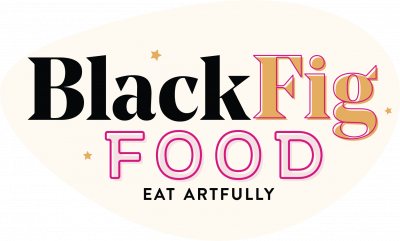As my cookbook collection continues to grow, I find myself going back to the very same one time after time. Frida’s Fiestas: Recipes and Reminiscences of Life with Frida Kahlo, gifted to me quite a few Christmases ago, is my go-to culinary connection to a culture lost. As I turn each page, I connect with my heritage; Papas en Salsa Verde, Flag Rice, Corn Pudding with Poblano Cream Sauce. It’s the cookbook that reminds me of the summer I found a considerable part of me through a college course called, Sketching the Southwest. I discovered “me, where a hole used to be.”
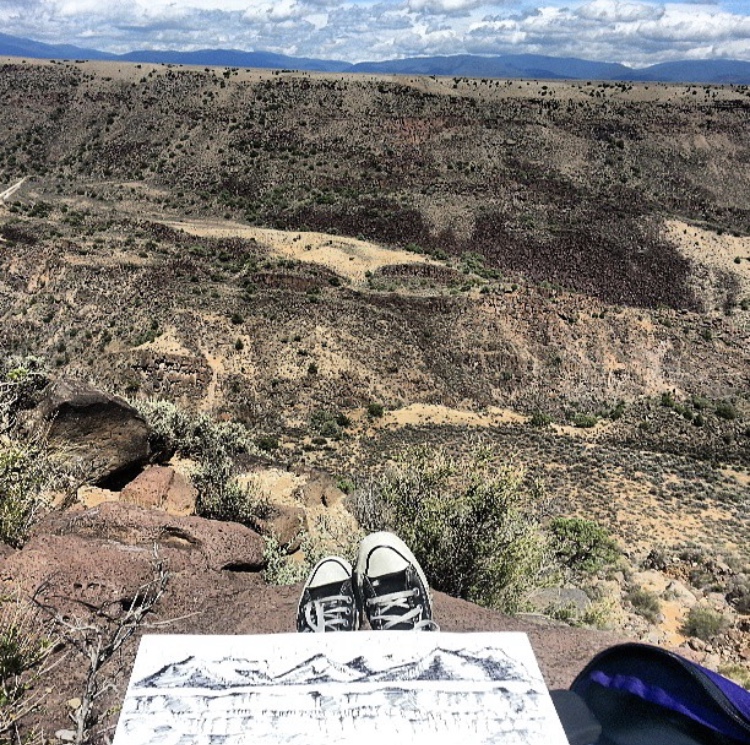
Sketching the Southwest
In the summer of 2013, I took a dual credit Art History and Drawing course called Sketching the Southwest, visiting various museums, Hispanic cultural exhibits, and historic landmarks of New Mexico. A whirlwind of emotions came over me from the experiences I encountered.
Absorbing so much art for the first time in my life, I developed a yearning to surround myself with it daily. I searched for an unfamiliar identity because I culturally stagnated for years. Connecting with the disconnection of my culture lost was on my to-do list. Here are several moving pieces that spoke volumes to me during my visit to the Southwest.
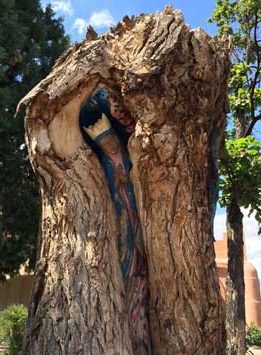
Sketching the Southwest through Miracles
The aura throughout the streets of Old Town Albuquerque created intrigue for me. The aura throughout the streets of Old Town Albuquerque created intrigue for me. Energy, traditional and new, filled the gift shops and older structures. I fixated on the ‘old’ and was curious about their history. For example, a tree was just a tree until I viewed it from the other side. The 300-year-old cottonwood, depicting a vision of the Virgin Mary seen by Juan Diego near Mexico City in 1531, is symbolic of miracles.
Upon entering the Town Plaza, my gaze switched to the San Felipe de Neri Church. The convent of Sister Blandina, and the home of the union soldier, Ambrosio Armijo, was built in the 1880s. It is now the Placita Restaurant on the square. The devotion to family, faith, and tradition is evident in its design. The 125-year-old staircase inside the church is fantastical. Imported from Spain in 1872 for the wedding of Ambrosio’s daughter, it accommodated the bride’s 30-foot long wedding gown train.
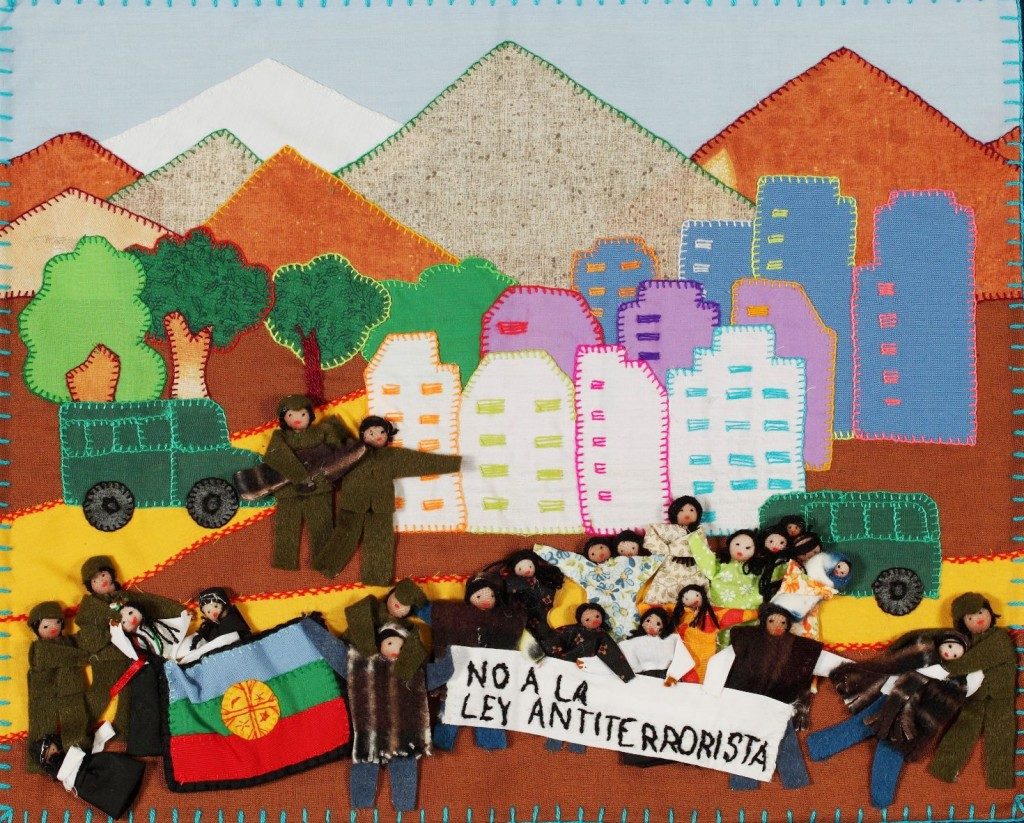
Moving Art Pieces
On day one of Sketching the Southwest, I was eager to visit the Hispanic Cultural Center. The Scraps of Life short film, produced by Gayla Jamison, echoed a haunting depiction of strength and family bond. Ironically, those two elements are weak within my familial history. The numerous grieving mothers, sisters, and wives of missing murdered Chileans during the Pinochet coup d’état between 1973-1990 banded together to look for truth and justice.
The tears of a hopeful wife who had not seen her missing husband in years were symbols of the faithfulness of a love that never died. I found the film to be a compelling starting point for the Stitching Resistance display. The beautifully stitched layers of sackcloth and burlap Arpilleras were a captivating narration of the film. Human rights issues and violations, abductions and disappearances, women and the community, wearing white shirts to symbolize peace, and black skirts to illustrate mourning were the stories created within each arpillera. They served as a guarantee that the lives lost were never forgotten.
Inspiration intensifies
The Estampas De La Raza exhibit of Contemporary Prints in the Albuquerque Museum conveyed a more personal connection. The exhibition manifested new thoughts on my identity. As I studied each print, I noted the artists’ portrayal of the Chicano Movement and its traditions; its secular and spiritual icons have kept the culture alive.
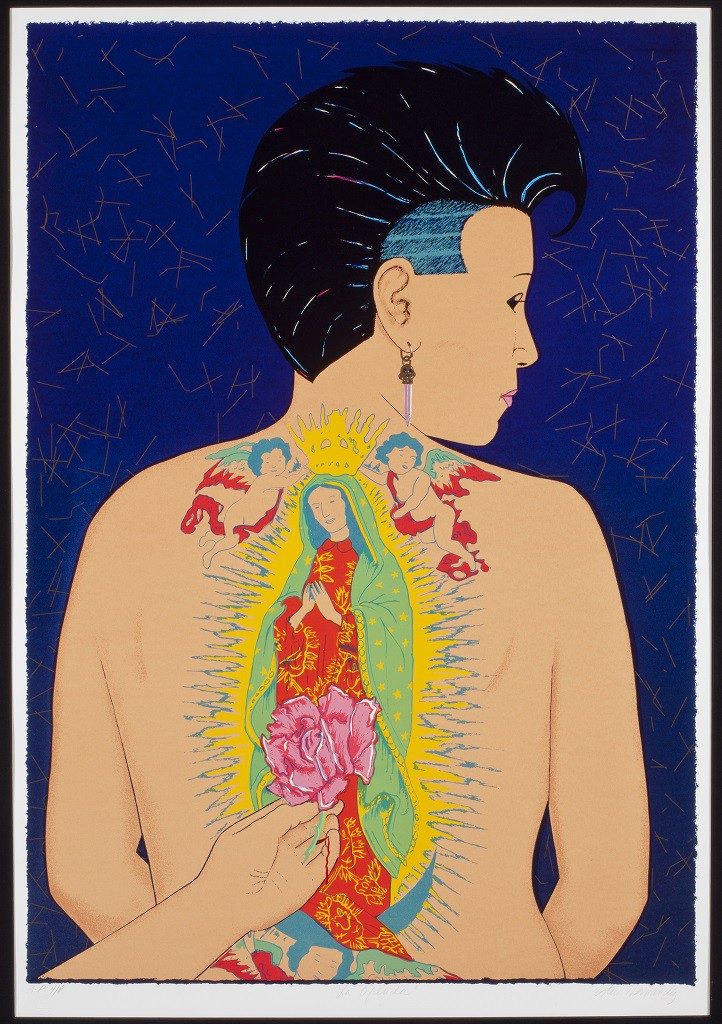
Chicana Art Print
In La Ofrenda (1988) by Ester Hernandez, a Latina depicted as a Chicana is proud of her past. Yet, at the same time, she is very much a part of contemporary American life. Comfortable with her identity, she bears a tattoo of the Virgin of Guadalupe on her back and a modern hairstyle. She looks as though she is carrying her heritage with her into the future.
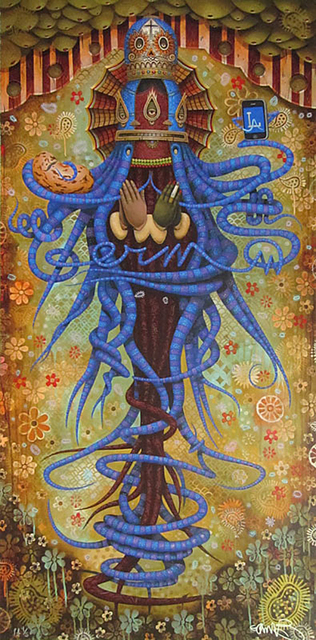
Although Purgatory Mary (2010) by Germs (Jaime Zacarias) did not necessarily portray the Chicano struggle like other works in the exhibit, it was a compelling piece celebrating more than one cultural experience. The central figure in print is a blue multi-tentacled ‘Mary’ with hands and eyes ostensibly derived from Buddhist sculpture. For example, a tentacle holds an iPhone with a Dodgers logo as the screensaver. Another arm wraps around a pinto bean (baby Jesus), and other tentacles spell out Germs across the composition in graffiti fashion.
Experiencing tourism in the Southwest was a revealing, educational, and inspirational absorption of art. It fed my soul with a rich and ever-changing culture defined by passionate artists in various ways. From the petroglyphs, Navajo textiles and pottery, to the Nuclear Science Museum and contemporary area artists’ studios, New Mexico’s art scene proved to be more than just red chili ristras hanging from an adobe home. The art scene and museums were significant catalysts to inspire me to become a better artist. More importantly, those same things gave birth to a thirst I’d never known; a desire for commonality with art, history, my own culture, and a self-confirmation that I do exist.
Sketching the Southwest through my art
The Hispanic culture and art I experienced were rich in tradition. With respect for a family unit and religious romanticism, it was truly inspirational. However, being raised in predominately white schools and neighborhoods, I felt a little resentment brewing within me. The culture I received was not the one I should have known.
My mother was taken out of school at an early age to work in the cotton fields and pecan farms. Her past fueled a passion for wanting a better life for me. Raising me in a culture that wasn’t ours subjected me to racism and a lack of acceptance.
After taking the Sketching the Southwest course, I realized it was time to embrace a culture lost. In summary, my final project blends my mother’s past, my reality, and a new connection to a culture lost.
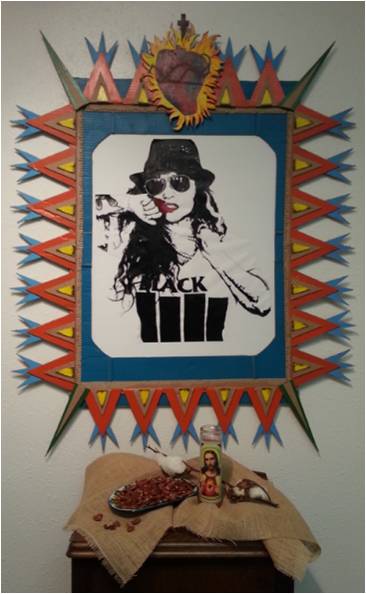
Me, Where a Hole Used to Be – 2013 Installation
Ruthie Landelius
Acrylic on vellum, coroplast, and cardboard
Art, music, and food have always been of great interest and inspiration for me. They merge into a Trinity of expression, which speaks to creativity and self-discovery. I cannot do one without the other. My aesthetic is informed by and relies on the feelings and information derived from that Trinity. Influences from New Mexico have allowed me to realize that this “Trinity” had taken me full circle. I experienced new food, music, and such penetrating art from multiple trips to this region. It all threw me into an in-depth investigation of who I was, who I am now, and how I exist. The progress of my self-growth has become an essential catalyst to the significance of the art I create.
I have felt an overwhelming sense of loss throughout my life without truly understanding what that loss was. Ultimately, I had discovered that I had missed out on a fantastic Hispanic Culture most of my life. I had always known of this particular culture; I just always viewed it from the other side of a looking glass. For years, I hid my talents out of fear of rejection. Now, I have the drive to create artwork that connects with the things that constitute my being.
The Installation
The old antique sewing machine with a dish of pecans and cotton resting on top represents Irene and her past. The combined earthy browns are reminiscent of dry heat in San Saba, Texas, her birthplace. The wood is thirsty for oil, just as you become thirsty from eating a pecan. The bright-colored frame with the Sacred Heart above transports me to a welcoming Mexican hacienda. It is one that I had never known. As I tug at my pearls and smear my lipstick, I attempt to remove the stress of fitting in. I am not Sandra Dee. I am only me. Surrounded by vibrant, welcoming colors, I wear a satin-rimmed fedora, Black Flag punk rock t-shirt, and ink on my body. I’ve discovered me, where a hole used to be. I am a Chicana.
To learn more about me, head over the My Story.
